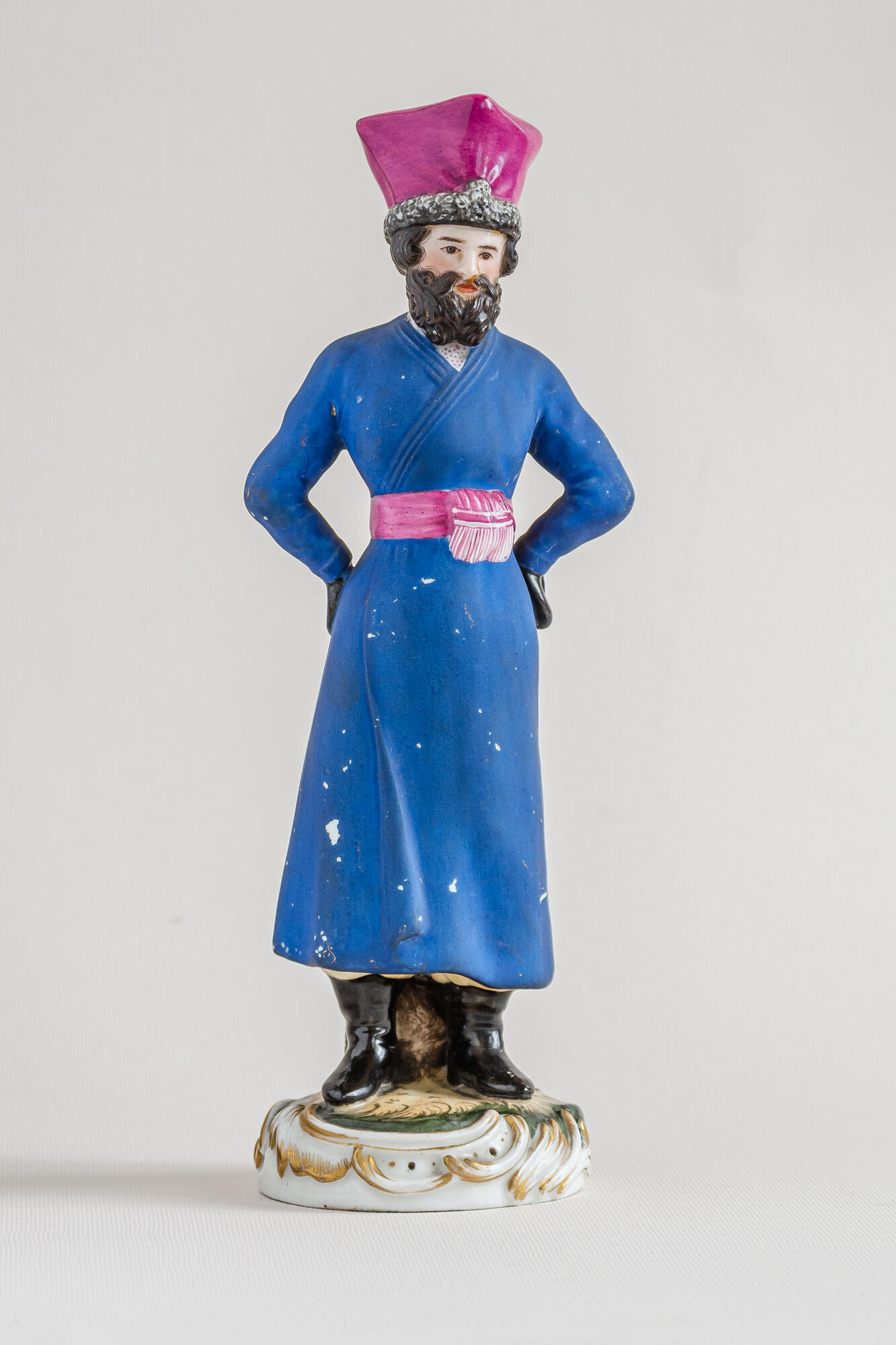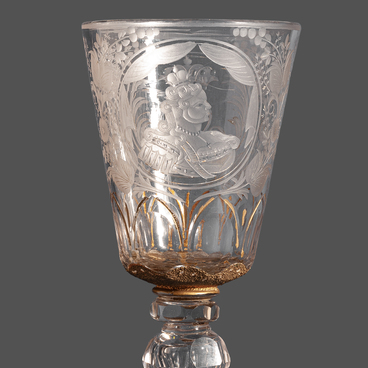In the first third of the 19th century, the Gardner Factory, located in the village of Verbilki near Moscow, produced not only porcelain tableware and ceremonial dinner services, but also a variety of sculptures. The figurines were modelled mainly after the printed drawings from famous publications, for example, according to the engravings of Alexey Venetsianov from the magazine ‘Magic Lantern’ [‘Volshebny Fonar’]. The collection of the museum contains a porcelain figurine ‘Coachman’, which belongs to this particular series.
The figurine depicts a middle-aged coachman with a bushy beard in a blue caftan. He has a red hat. Hands in mittens are folded behind the back. Clothes are painted, but they do not show the texture of the fabric. The slightly elongated proportions of the figurine correspond to the aesthetics of high classicism.
In the 19th century, the costume of a Russian coachman consisted of a long wrap jacket, a rectangular hat, and high boots. The style of clothing of that time was influenced by Tatar and Polish national costumes. ‘Tatar caftans’ were long, wide, baggy, and loose, with long wide sleeves and a fastener on the left side. ‘Polish caftans’ were shorter, with narrow sleeves; they were fitted and fastened on the right side. So, the top dress on the porcelain coachman resembles exactly the Polish version of the caftan.
The figurine’s caftan is traditionally belted with a red sash — a long and wide strip of cloth wrapped around the waist. This accessory was an indispensable element of a coachman’s attire: since in the 19th century there were no pockets on clothes, valuables were often hidden in the folds of the sash, like in a waist bag.
The founder of the porcelain factory, which produced this figurine, was the Scottish merchant Francis Gardner. In 1746, he came to Russia to launch his own business, and began to introduce himself as Franz. At first, Gardner was involved in logging and sugar production. Later he moved from Saint Petersburg to Moscow and decided to build a porcelain factory. He chose the village of Verbilki in the Moscow Governorate as the site for the new factory. In 1882, for the quality of products, the company was awarded the right to depict the state emblem on its products.
The figurine depicts a middle-aged coachman with a bushy beard in a blue caftan. He has a red hat. Hands in mittens are folded behind the back. Clothes are painted, but they do not show the texture of the fabric. The slightly elongated proportions of the figurine correspond to the aesthetics of high classicism.
In the 19th century, the costume of a Russian coachman consisted of a long wrap jacket, a rectangular hat, and high boots. The style of clothing of that time was influenced by Tatar and Polish national costumes. ‘Tatar caftans’ were long, wide, baggy, and loose, with long wide sleeves and a fastener on the left side. ‘Polish caftans’ were shorter, with narrow sleeves; they were fitted and fastened on the right side. So, the top dress on the porcelain coachman resembles exactly the Polish version of the caftan.
The figurine’s caftan is traditionally belted with a red sash — a long and wide strip of cloth wrapped around the waist. This accessory was an indispensable element of a coachman’s attire: since in the 19th century there were no pockets on clothes, valuables were often hidden in the folds of the sash, like in a waist bag.
The founder of the porcelain factory, which produced this figurine, was the Scottish merchant Francis Gardner. In 1746, he came to Russia to launch his own business, and began to introduce himself as Franz. At first, Gardner was involved in logging and sugar production. Later he moved from Saint Petersburg to Moscow and decided to build a porcelain factory. He chose the village of Verbilki in the Moscow Governorate as the site for the new factory. In 1882, for the quality of products, the company was awarded the right to depict the state emblem on its products.



